Every year, a million visitors venture into the Machu Picchu, a must-visit landmark in Peru. Today, it was our turn to explore the world's most iconic archaeological sites and Peru's most popular tourist attraction. Not only did we wandered the Peruvian Sacred City, but we also trekked the challenging Machu Picchu Mountain.
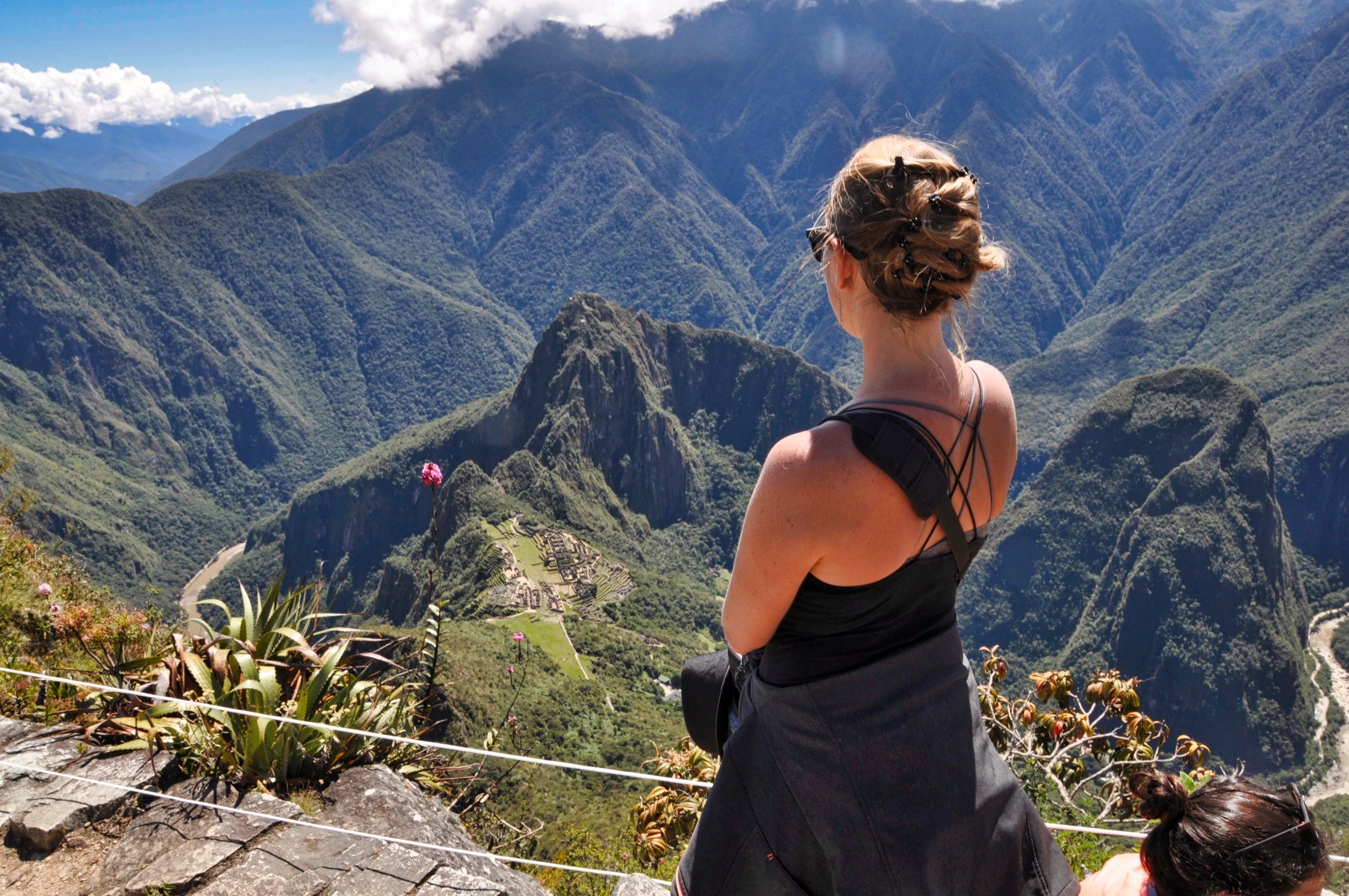
As we couldn’t buy the shuttle bus ticket in advance for arriving too late the previous day at Aguas Calientes, we decided to walk up the Machu Picchu which means Old Mountain in Quechua, the old Inca language. At 4 AM, we left our hostel, Catari's House, and set off for the Inca ruins and for the Machu Picchu Mountain. The streets were busy. Many people were already lined up at the bus ticket kiosk. More were waiting for the buses which only departed at 5.30 AM. We were glad to have skipped both queues. And so far, we were thrilled to hike up from Aguas Calientes to Machu Picchu.
Easily, we made our way to the only bridge running over the Vilcanota River. It was closed. We had to wait patiently with another hundred (yeah - hundred) of climbers for the guards to let us pass at 5 AM. We started going up the trail in the dark. After 50 minutes, we reached the entrance of the citadel as the first buses were dropping their first customers.
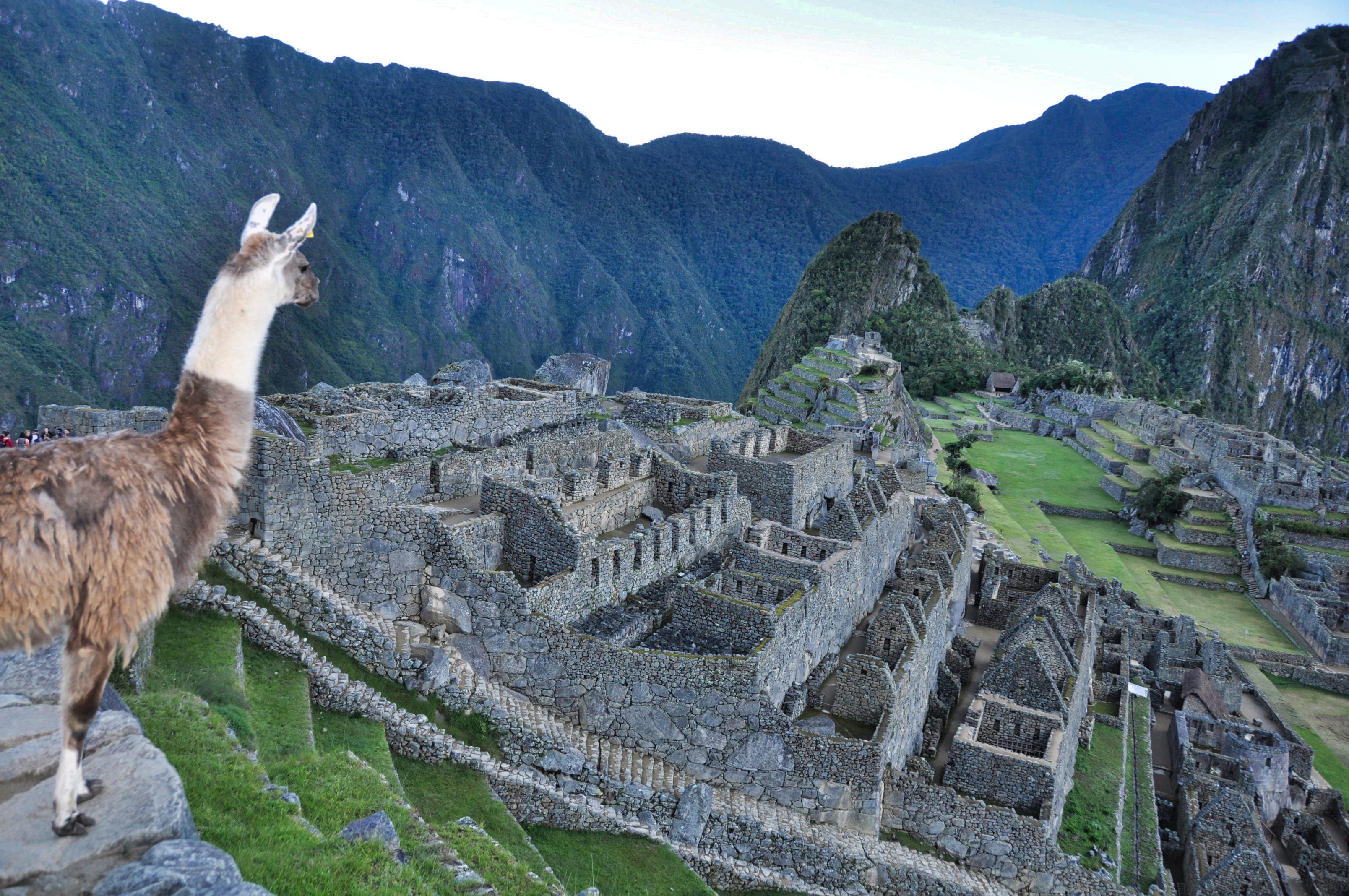
A 6 o’clock sharp, the main gates opened. Within minutes we saw our first glimpse of the Ancient City erected high in the Andes Mountains. The ruins were well preserved but the dramatic location made the place surreal. Llamas were parading around and weren’t afraid to pose for our cameras. So funny. We climbed up to a good spot to admire the sun as it appeared above the green mountains. The light was gradually illuminating the Lost Inca City, one section after another. The spectacle was magic.
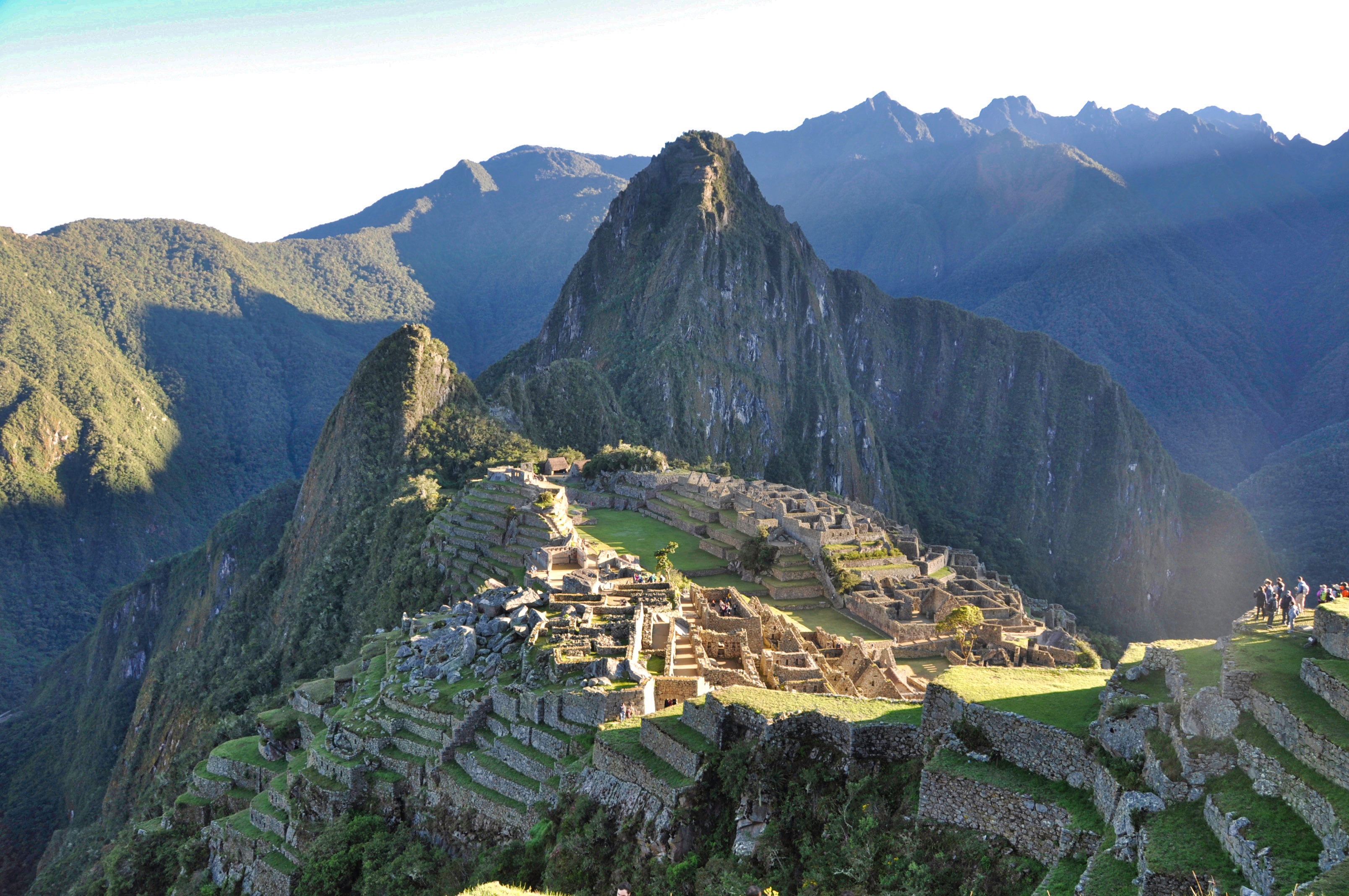
We ventured for 2 hours in the remains of the Inca Empire. We strolled along the grassy terraces which were used to harvest hundreds of different crops. We admired the different buildings such as the Intiwatana Temple of the Three Windows, the Sun Temple and the Temple of the Condor.
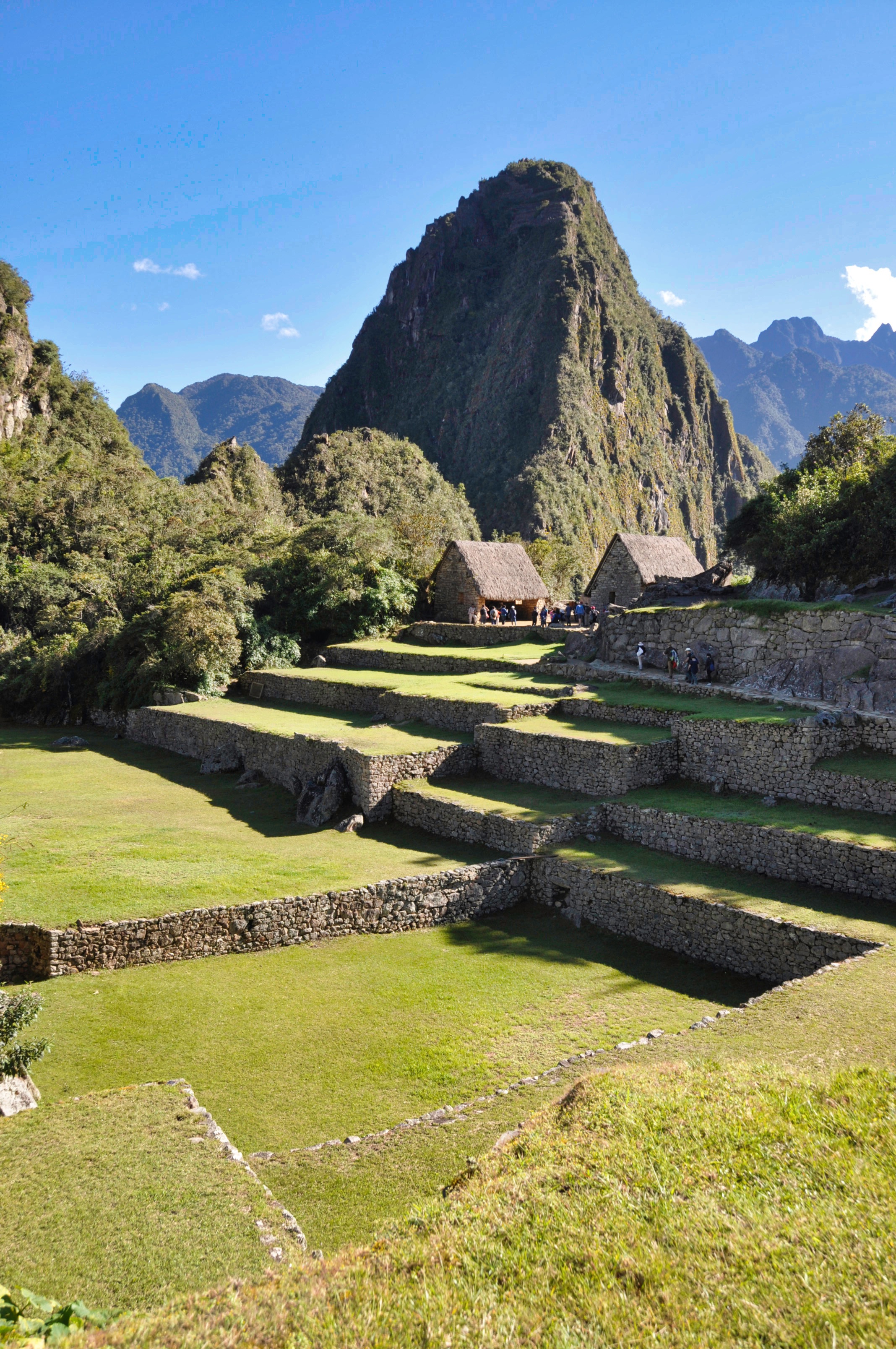
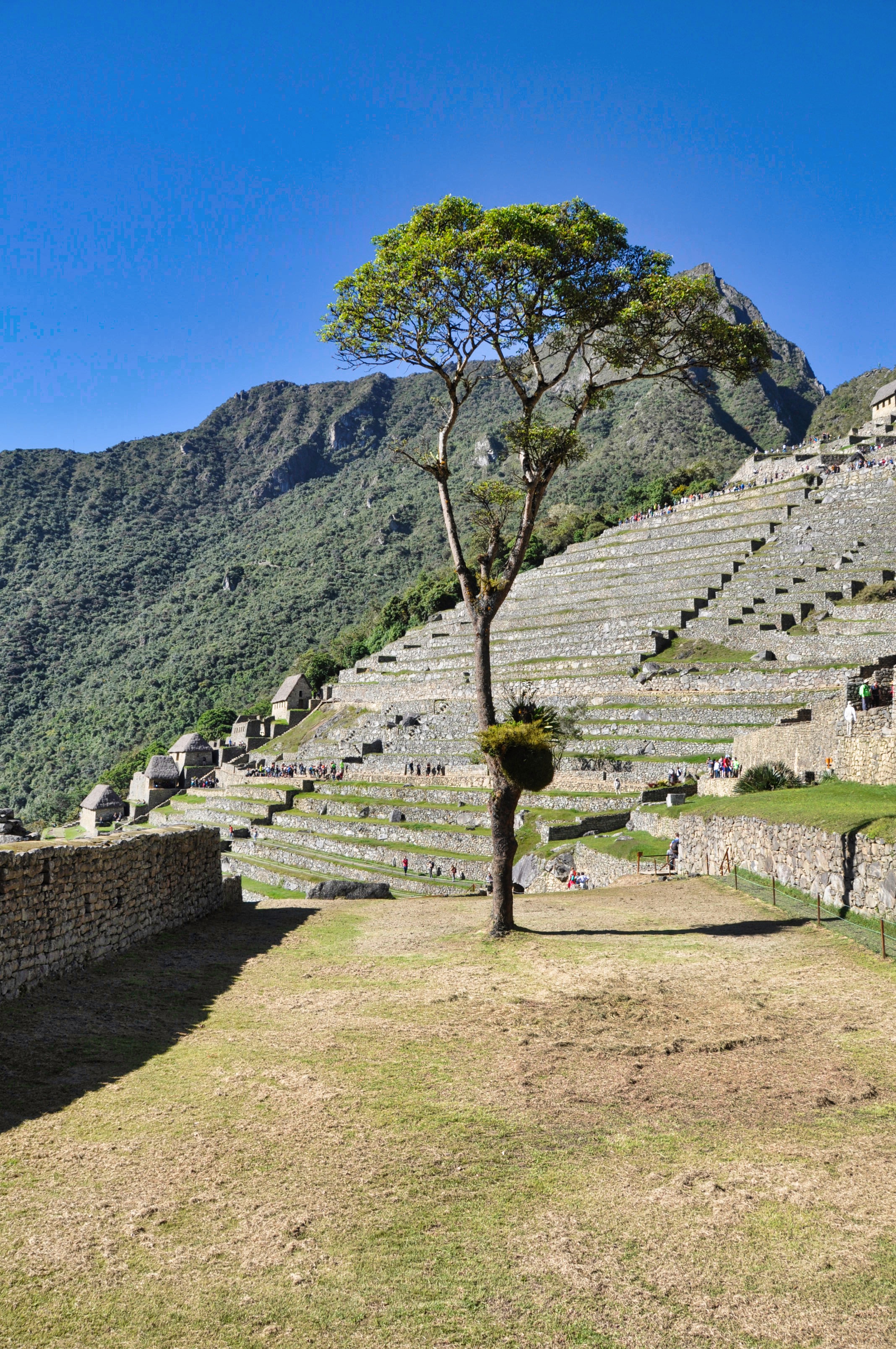
Around 9 AM, it was time to ascend the neighbouring peak called La Montaña - the Machu Picchu Mountain. The trek is less popular than the "(not really) deadly" Huayna Picchu trail. The latest is a treacherous climb with narrow paths, ladders and sheer drop-offs. Huayna Picchu, which mean Young Mountain, is located behind the iconic ruins and is commonly seen on postcards as the background of the Machu Picchu. The Machu Picchu Mountain, being much much higher, offer an even more impressive perspective of the whole region.
We made our way to the warden hut following the signs towards the Sun Gate. We signed up the registry, show off our ticket and passport and joined the 400 brave enough visitors who were allowed to enjoy (or suffer) the ancient Inca trail. Made of 2115 uneven old stone steps, ( yeah we counted them), the Machu Picchu Mountain was well-marked and easy to follow. Some stretches were steeper than other. The high altitude and the heat made the ascent more challenging. Along the switchback trail, we paused many times in the shade to catch our breath. The view of the Machu Picchu getting tinier and tinier was worth every break. Every step was hard. We carried on for an hour and a half, climbing up the never-ending-steps but enjoying the delightful vistas the whole way up.
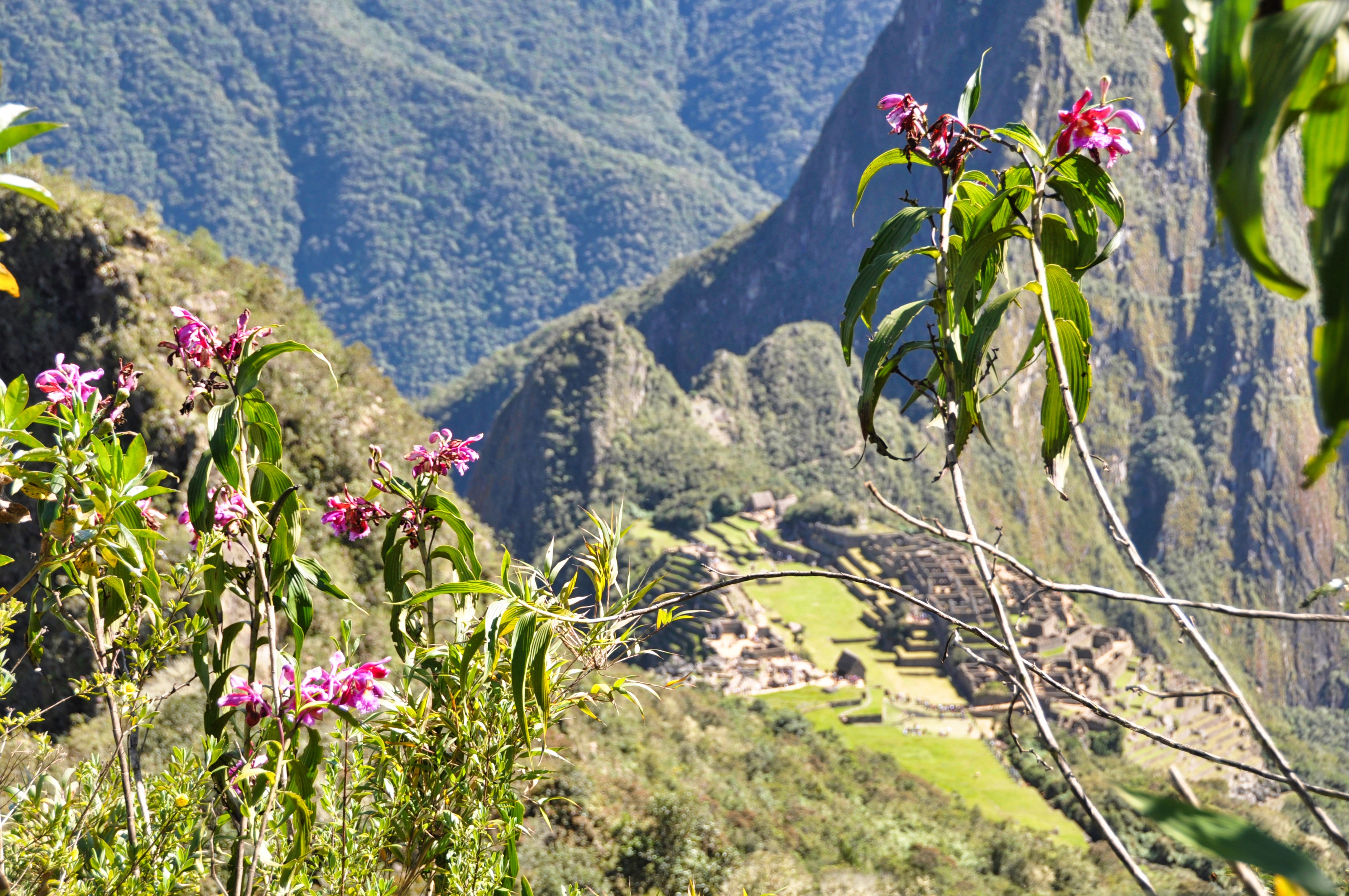
The last section was narrower, steeper and scarier, especially for people with fears of heights. We crossed a few people who freak out as they needed to descend the rocky stairs. The trail was not busy. We crossed only a dozen of other enthusiastic trekkers. Suddenly we reached the final switchback. Ahead, we saw the summit. Breathless and tired, we had just completed one of the most challenging hikes we did. People were all smiling. Happy to have conquered the Machu Picchu Mountain.
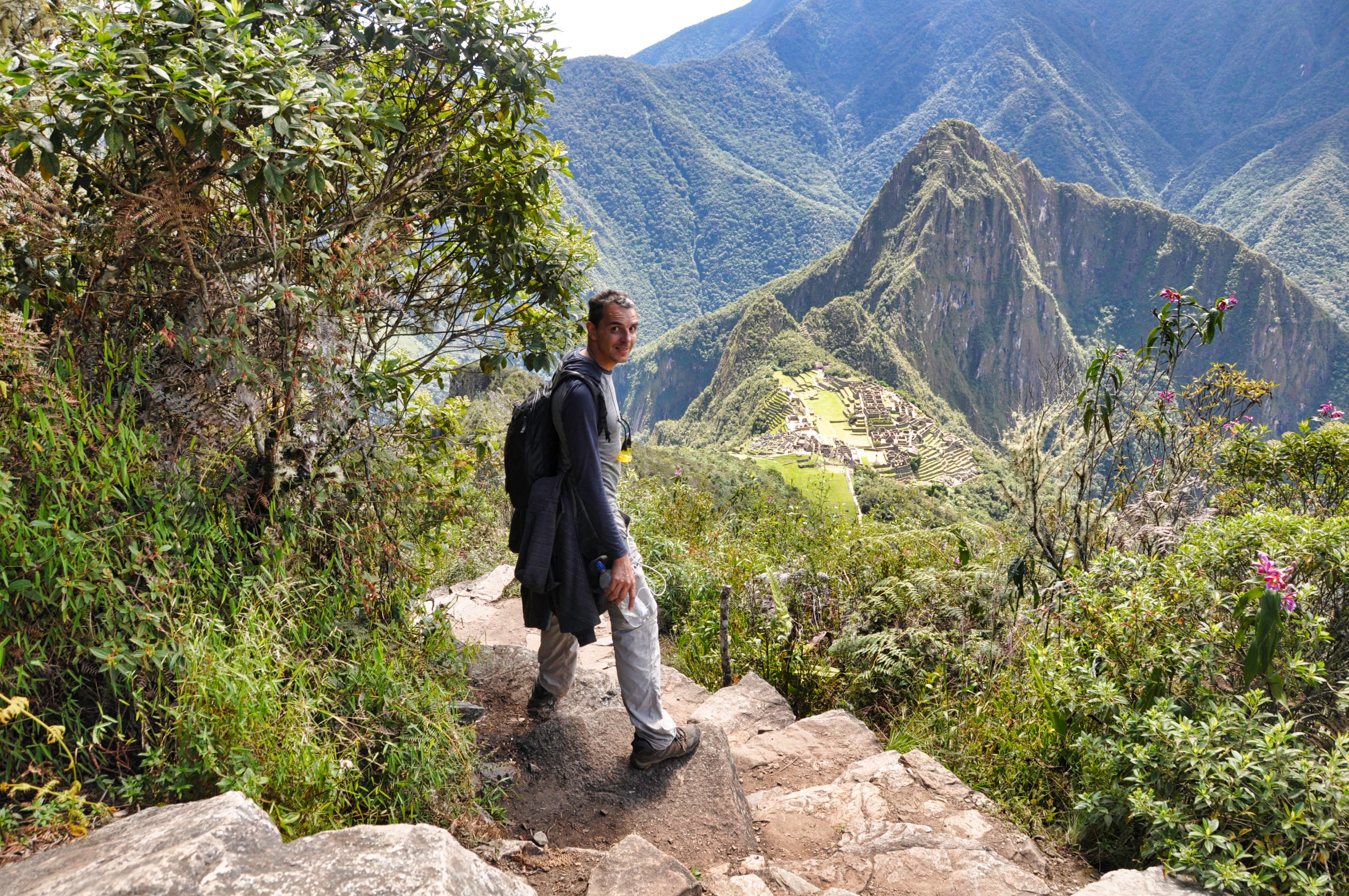
Located at 3061 meters above sea level, or 630 meters above the iconic Inca sanctuary, the lookout offered an unparalleled view of the Rio Urubamba snaking its way between the green mountains and wrapping around the rare Inca site that the Spanish conquistadors never found. And therefore never destroyed. The scenery was awe-inspiring. We took millions of pictures of the Machu Picchu peacefully nestled on the green ridge and protected by the Huayna Picchu and Putucusi mountains.
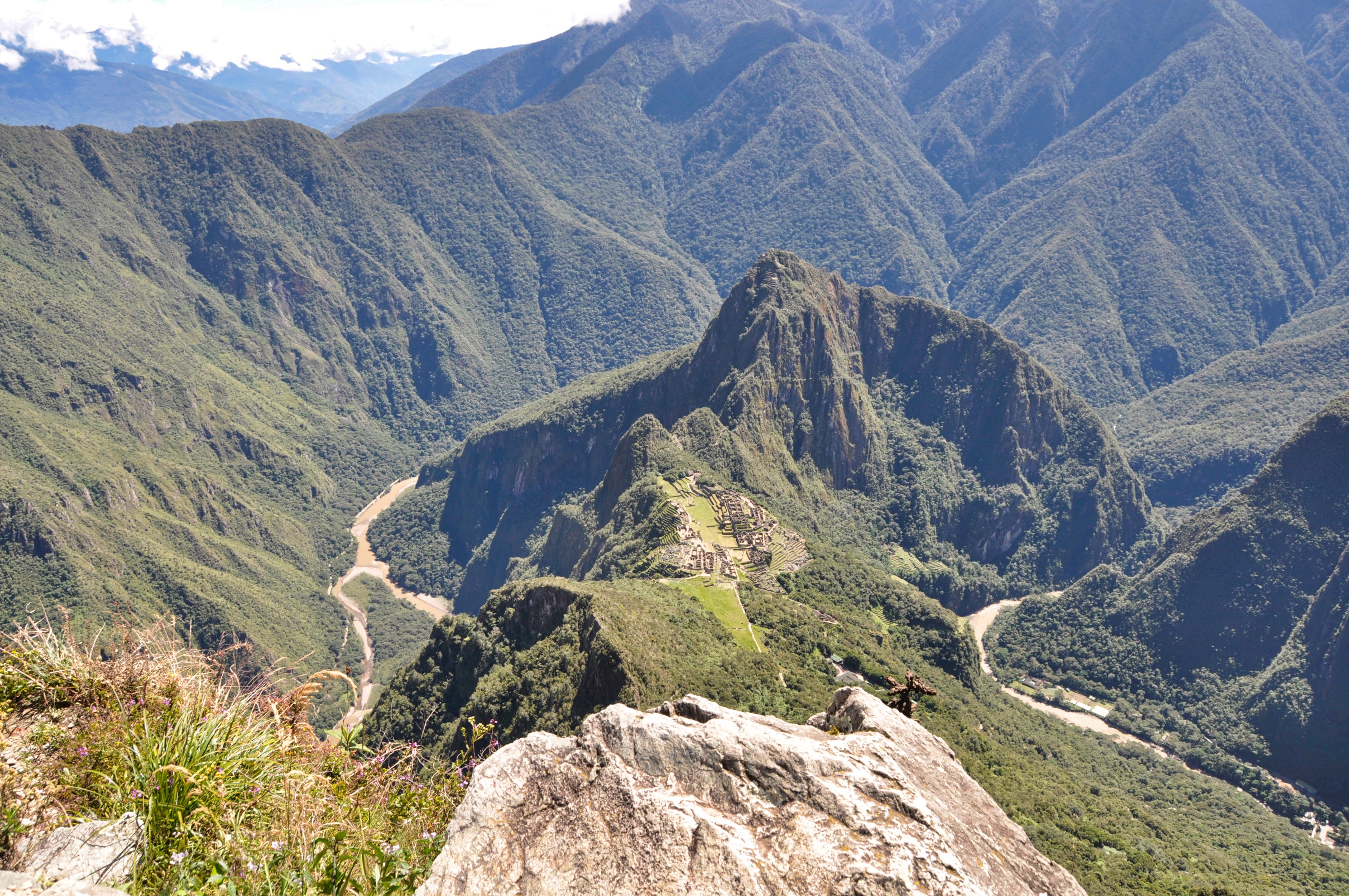
We sat for a while at the summit taking in the whole panorama, looking down at the ruins of the incredible site, sharing smiles with other similarly mesmerised trekkers. We could see the Santa Teresa’s hydro-electric station and the riverside Aguas Calientes from where the adventure all started.
After some time, we climbed down the mountain, got our passports stamped for free, walked down back to Aguas Calientes where our train to Ollantaytambo was waiting for us.
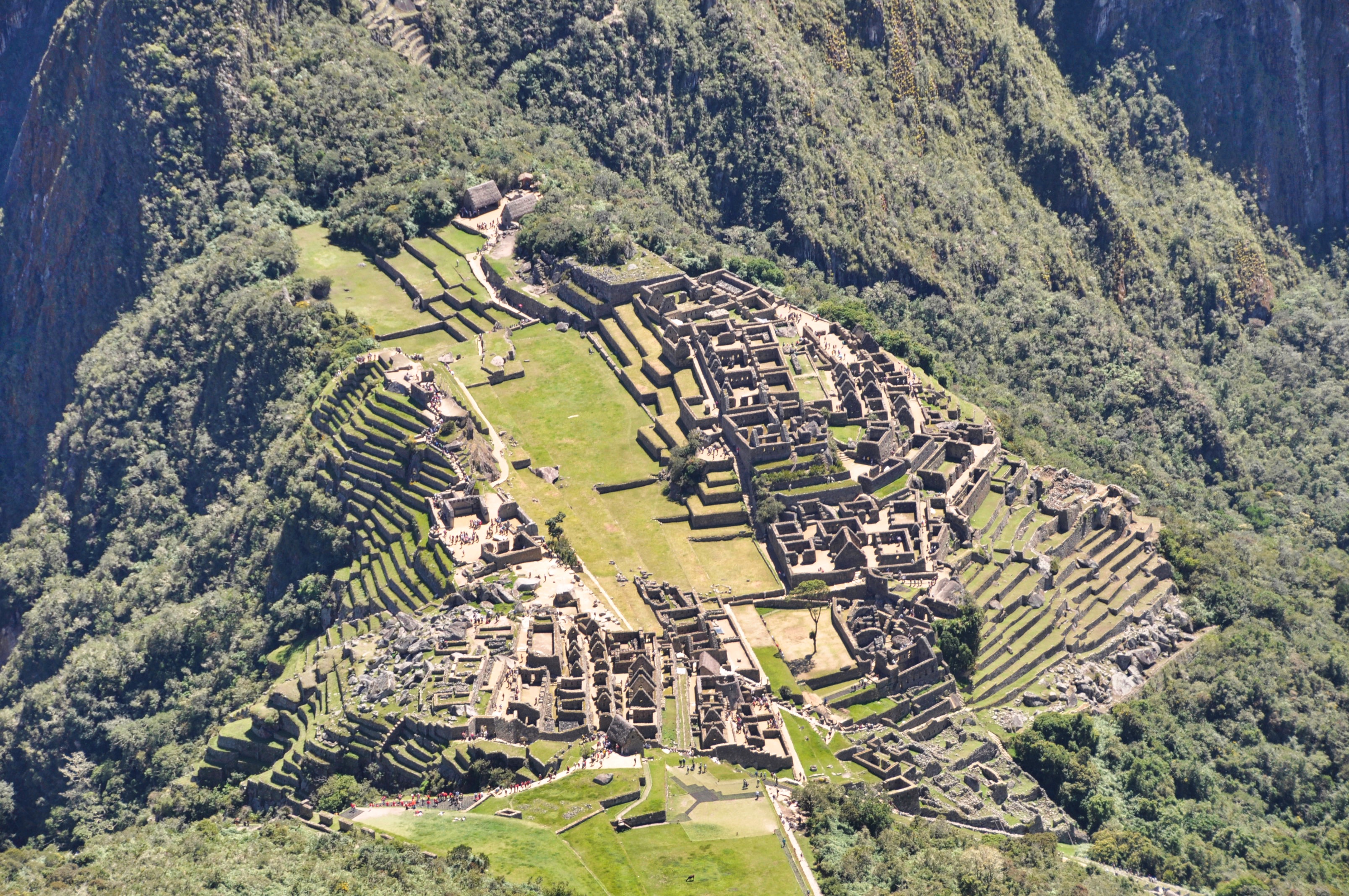
How Much Does a Trip to The Machu Picchu Mountain Cost?
- Entrance ticket to Machu Picchu: $44
- Roundtrip bus ticket from Aguas Calientes up to Machu Picchu site: $24
- Collectivo from Ollantaytambo to Cusco: 10 sol
- Return train from Cusco to Ollantaytambo: 150$
Practical informations about the Machu Picchu Mountain
- Only 400 people daily can hike Machu Picchu Mountain, divided into two different groups: from 7:00 – 8:00 AM, and 9:00 to 10:00 AM. Try to pick the first slot to avoid the midday heat.
- It is easy to get tickets for the Machu Picchu Mountain than the incredibly popular Huayna Picchu.
Experiencing the Machupicchu and trekking the Machupicchu mountain was amazing. A once-in-a-lifetime experience. Even if you need to take the bus, make sure you have enough time to explore this unique wonder of the world.
Have you been to the Machu Picchu? Did you ascent the Machu Picchu Mountain? Did you wake up at 4 AM to walk up from Aguas Calientes to Machu Picchu?


